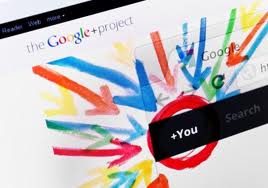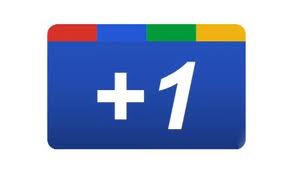We're looking back at some of Google's most hyped up products over the past decade and checking in on how they are doing today. Up first: Google Plus and Google Wave.
Best of August Tech News for Arts Managers
Google+
 Google+, the search engine giant’s new social networking site with 20 million users, has been getting a lot of press lately. There’s already some good advice out there for art nonprofits from the usual suspects (Devon Smith, Heather Mansfield). And artists are already exploring this new way of sharing their music and visual pieces. With technology this new, there is always a lot of experimentation by the early adopters, speculation by the commentators, and caution from the silent majority. But even at this early point in time, when the fate of Google+ is up in the air, there is one thing that I am certain of: that is that Google + represents a revolution in the integration of digital activity and the way we interact with the world around us. In this article, we’ll talk about what sets Google + apart, how it is integrated with other Google products, and what implications it holds for business in general and the arts in particular.
Google+, the search engine giant’s new social networking site with 20 million users, has been getting a lot of press lately. There’s already some good advice out there for art nonprofits from the usual suspects (Devon Smith, Heather Mansfield). And artists are already exploring this new way of sharing their music and visual pieces. With technology this new, there is always a lot of experimentation by the early adopters, speculation by the commentators, and caution from the silent majority. But even at this early point in time, when the fate of Google+ is up in the air, there is one thing that I am certain of: that is that Google + represents a revolution in the integration of digital activity and the way we interact with the world around us. In this article, we’ll talk about what sets Google + apart, how it is integrated with other Google products, and what implications it holds for business in general and the arts in particular.
What is Google+?
Check out the Google+ intro video if you haven’t already:
There’s a lot of chatter in the blogosphere right now around the idea that Google+ is the ultimate content-sharing platform. The reasons given for this range from enhanced privacy controls making people more comfortable with sharing to the Sparks feature which allows users to find and share content without leaving the platform.
- Circles
One of the biggest things separating Google+ from the rest of the social media pack is its Circles. Instead of all of your contacts either being a friend/follower or not being one, they can be put into different Circles- friends, family, colleagues, etc. Then- and this is the kicker- you can choose who will view which posts. No more work colleagues or family members seeing your expletive-filled posts or pictures from that party.
Sure, Facebook has groups. But in a Facebook group, users choose to join the group--on Google+, you choose the names of your circles and assign who is in them. In Facebook groups, you can post on the group’s wall (which involves first going to the group page), but anyone who visits the page can see what you posted. With Google+, you can choose to share content only with certain circles, adding an extra layer of privacy.
- Enhanced Privacy Controls
Chris Brogan covers this pretty well in this short video. Privacy controls are more transparent and easy to find compared to Facebook.
- Sparks
Google is still primarily a search engine, so it’s no coincidence that they have an integrated search feature in the network. “Sparks” allows you to enter a topic you’re interested in (say, nonprofits), and every time you login, you can click that word to find many articles on the topic that you can then share with as many or as few Circles as you like.
- +1 and Search Engine Optimization integration
 Even if you haven’t made a Google+ account yet, you’ve probably seen the little “+1” icons around the Web. It’s Google’s version of a “like” button. Unlike Facebook’s button, whose data Google doesn’t have access to, a +1 actually impacts search rankings. So, the more +1s a website, article, or video has, the higher it appears in searches, and the more likely people will find it and share it, etc.
Even if you haven’t made a Google+ account yet, you’ve probably seen the little “+1” icons around the Web. It’s Google’s version of a “like” button. Unlike Facebook’s button, whose data Google doesn’t have access to, a +1 actually impacts search rankings. So, the more +1s a website, article, or video has, the higher it appears in searches, and the more likely people will find it and share it, etc.
If you want to learn more about the nuts and bolts, check out Mashable’s guide to G+.
While all these features may pave the way for Google+ to become the content capital of the interwebs, right now, companies, organizations and brands can’t directly participate in this content-sharing utopia.
Currently, the only way for brands to get their content onto G+ is through “real people’s” accounts- employees, constituents, secret admirers, etc. This makes it even more important that your organization has something interesting to say and compelling to share.
Integration
Imagine a world where the offers you receive are based on data not only from your activities, but your friends’ activities . . . where place-based businesses target customers not only by email and postal mail within certain zip codes, but by what street you are walking down, or which restaurant your friends have gathered at . . . This world, where social networking merges with mobile-based services and retail, is closer than ever to being a reality with Google+.
Already, Google Offers has been launched in New York and San Francisco, beaming coupons to customers based on their location and preferences. According to Stephanie Tilenius, Google’s VP of Commerce, Google Offers and Google Wallet (the company’s payment system) will be integrated into G+ as well as other Google properties such as Maps.
Edd Dumbill at O’Reilly Radar is calling this integration of social networks with other web-based applications a “social backbone” to our entire web experience, as opposed to the “walled garden” of existing social networks.
. . . social features will become pervasive, and fundamental to our interaction with networked services. Collaboration from within applications will be as natural to us as searching for answers on the web it today . . . Search removed the need to remember domain names and URLs . . . . The social backbone will relieve our need to manage email addresses and save us laborious ‘friending’ and permission granting activity . . .
All this integration, says Dumbill, will help computers better serve users.
Where does this leave business?
So the world may be changing. How should you prepare for that? Below are some tips from some smart guys at Social Media Explorer.
Jason Falls “Stay the course with what you’re doing. Wait for the brand-permissions and guidelines to come from Google on the Plus platform. Experiment with it for yourself to know how it works and how non-linear you have to be thinking to optimize the use of Circles.”
Mark Ivey Five questions to ask for starters, and to make sure you’re positioned for the G+ world:
- Are you in the game? Do you have a presence across paid (search, broadcast, etc), earned (events) and owned (Facebook, Twitter, blogs, and now G+) media? These are your marketing beachheads, and you’ll need to work across the board to make sure you’re connecting with customers with your messages.
- Do you have a clear content marketing strategy? If so, you’re already using listening tools and engaging in related conversations. Adjust your strategy for G+-and stick to it. If not, better get one in order fast-I just met with two companies last week, neither had a content strategy, both are scrambling in catch-up mode.
- Is your content relevant? If you’re unclear on the role and importance of relevant content, read Michael Brito’s nice analysis piece on SME. Conduct a content audit, compare it to industry conversations, and judge for yourself. Is your content hitting the target? Are you involved and influencing industry conversations? What is your share of voice around key topics?
- Do you have a content engine and systematic publishing process? Then you should have apublishing model and be systematically chunking out content, carefully targeted to your key audiences. Run it like a publisher, with clear editorial direction, calendars, and hire editors to help you drive it- more tips here
- Do you have control over your destiny? Putting all of your eggs into one basket you don’t control is stupid. Why put all your resources into building Facebook Pages when you don’t own that real estate (No one knows how G+ will affect FB yet but the risk is obvious)? The same is true of Google+-it’s a marketing outpost, not your home base. Better to build your own blogs, communities and following, and diversify your investments across several platforms, along with following a carefully crafted plan. Build a defensible program that can weather any storm, since no one knows how this will play out (who would predict G+’s amazing launch?)
This is a great opportunity to step back, take a deep breath and assess your overall strategy and social media program. There’s no reason to panic.
Where does this leave the arts?
Ah- now THAT’S the interesting question, and it’s one our industry will probably be talking about for, oh, the next year or so. With G+’s emphasis on content and people (not brands), two conclusions jump out:
- Producing art that resonates with our audiences is vital, and
- People are our most valuable asset.
To be sure, these aren’t new ideas. What’s new, though, is that what our audience tells each other about our work now has as much or more digital presence than what we tell our audience about our work. The level of content-sharing that Google+ enables means that it is becoming easier for friends to share opinions about articles, art, politics, entertainment, etc at any time. Additionally, the more something is shared, the higher its search ranking. So getting people to talk about art online is more important than ever. Do you ask your audience what they think of your art? Do you encourage them to talk to their friends about it online, continuing the conversation long after they’ve left the building? Do you reward your super-fans who already post about your organization to their social networks? What about tying in the art you present or produce with trending topics?
A new social layer to the web means it’s all about giving ‘em something to talk about.
More cool articles on G+: The Social Layer: Six Thoughts On Where Google Plus Is Going Three Key Things Google Is Doing While We Focus on Google+ What the Circles Illustrate About Influence List of important updates coming soon in Google Plus






